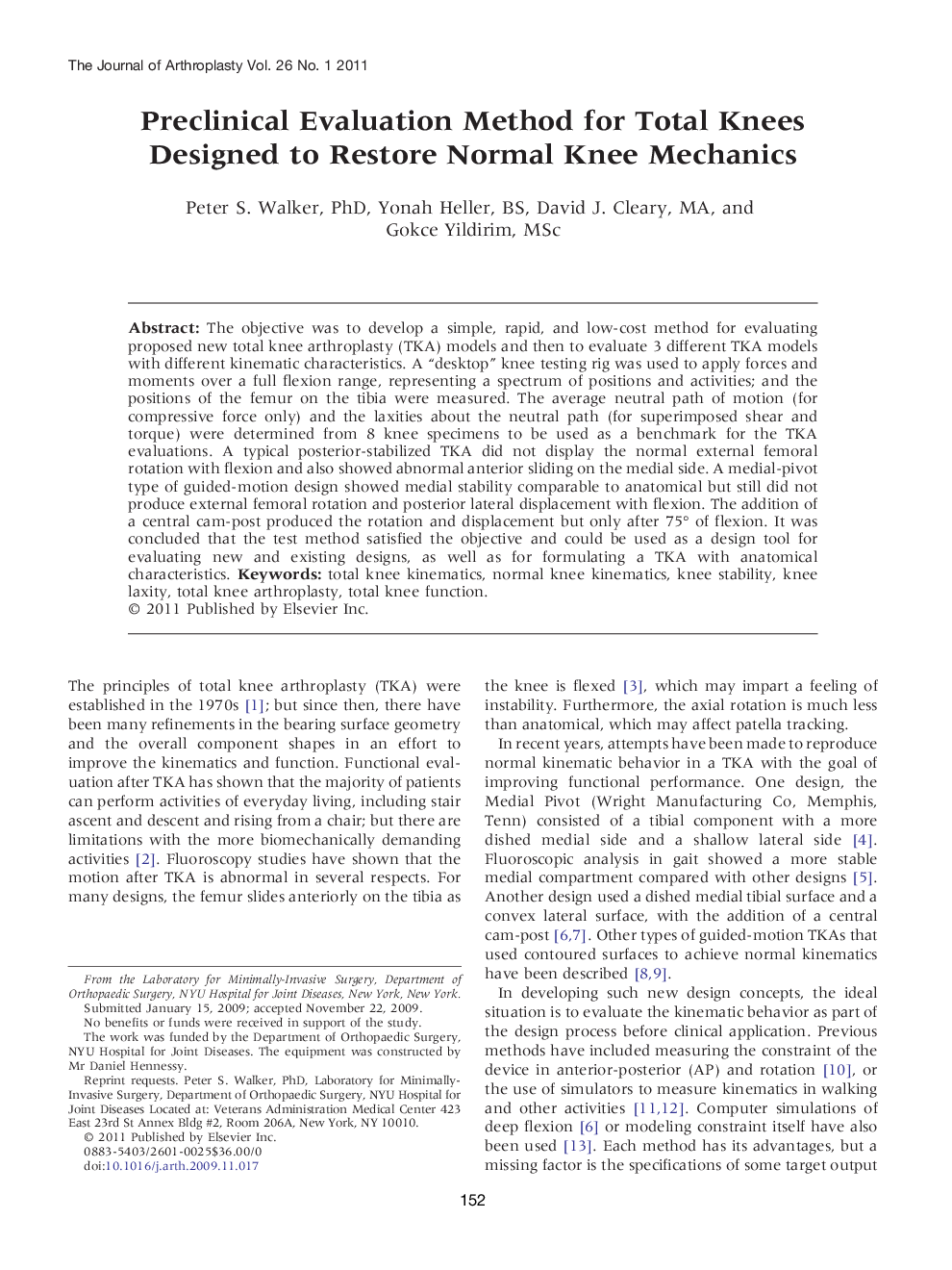| Article ID | Journal | Published Year | Pages | File Type |
|---|---|---|---|---|
| 4062909 | The Journal of Arthroplasty | 2011 | 9 Pages |
The objective was to develop a simple, rapid, and low-cost method for evaluating proposed new total knee arthroplasty (TKA) models and then to evaluate 3 different TKA models with different kinematic characteristics. A “desktop” knee testing rig was used to apply forces and moments over a full flexion range, representing a spectrum of positions and activities; and the positions of the femur on the tibia were measured. The average neutral path of motion (for compressive force only) and the laxities about the neutral path (for superimposed shear and torque) were determined from 8 knee specimens to be used as a benchmark for the TKA evaluations. A typical posterior-stabilized TKA did not display the normal external femoral rotation with flexion and also showed abnormal anterior sliding on the medial side. A medial-pivot type of guided-motion design showed medial stability comparable to anatomical but still did not produce external femoral rotation and posterior lateral displacement with flexion. The addition of a central cam-post produced the rotation and displacement but only after 75° of flexion. It was concluded that the test method satisfied the objective and could be used as a design tool for evaluating new and existing designs, as well as for formulating a TKA with anatomical characteristics.
